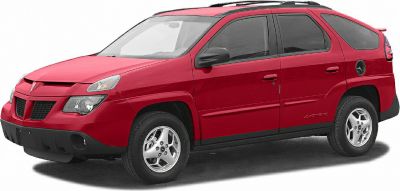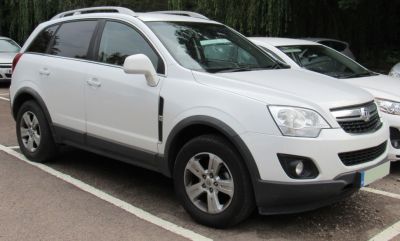 2021 Toyota RAV4 V (facelift 2021) Dimensions, Size & Specs
2021 Toyota RAV4 V (facelift 2021) Dimensions, Size & SpecsMeasurements of the 2021 Toyota RAV4 V, engineered for optimal performance and comfort
| Dimensions | |
|---|---|
| Length: | 4595-4615 mm180.9-181.7 in15.1-15.1 ft |
| Width: | 1854-1865 mm73.0-73.4 in6.1-6.1 ft |
| Height: | 1685-1742 mm66.3-68.6 in5.5-5.7 ft |
| Ground Clearance: | 180-218 mm7.1-8.6 in0.6-0.7 ft |
| Trunk Capacity: | 490-1062 liter17.3-37.5 cu ft |
| Trunk Capacity (Max): | 1604-1977 liter56.6-69.8 cu ft |
| Weight Specifications | |
| Curb Weight: | 1529-1835 kg3371-4045 lbs |
| Maximal permitted Weight: | 2091-2510 kg4610-5534 lbs |
| Tire Specifications | |
| Rims Sizes: | 17-inch rims:
|
| Tire Sizes: |
|
The 2021 Toyota RAV4 V facelift generation represents a modern, versatile SUV designed to meet a wide range of driving needs. Produced from 2021 onwards, this generation offers a blend of refined design, practicality, and manageable size. Its length ranges from 4595 to 4615 mm (181.1 to 181.5 inches), making it comfortably sized for urban environments while still offering a strong road presence. The width spans from 1854 to 1865 mm (73.0 to 73.4 inches), and height varies between 1685 and 1742 mm (66.3 to 68.5 inches), allowing for ample interior space and commanding visibility.
Curb weight falls between 1529 and 1835 kg (3,371 to 4,045 lbs), depending on trim and drivetrain configurations, balancing efficiency with durability. The maximum permissible weight ranges from 2091 to 2510 kg (4,610 to 5,535 lbs), reflecting the RAV4’s robust chassis capable of handling both daily commutes and adventurous excursions.
One of the standout practical features of the RAV4 V facelift is its versatile luggage capacity. With rear seats upright, it provides between 490 and 1062 liters (17.3 to 37.5 cubic feet) of cargo space. Folding the rear seats down expands the capacity dramatically to between 1604 and 1977 liters (56.6 to 69.8 cubic feet), perfect for transporting larger loads or outdoor gear.
Ground clearance is notably high at 180 to 218 mm (7.1 to 8.6 inches), enhancing off-road capability and improving ride comfort over rough terrain. The vehicle rides on a selection of wheel sizes including 17-, 18-, and 19-inch rims, with tire sizes like 225/65 R17, 225/60 R18, and 235/55 R19, balancing traction and road handling.
All in all, the Toyota RAV4 V (facelift 2021) remains a favorite in the compact SUV segment, blending efficient dimensions, functional cargo space, and durable weight ratings. Its refined size and features make it an excellent choice for families, commuters, and adventure seekers alike.
Discover the standout features that make the 2021 Toyota RAV4 V a leader in its class
Have a question? Please check our knowledgebase first.
The Toyota RAV4 V facelift produced from 2021 onwards has a length ranging approximately from 4595 mm to 4615 mm (181 to 181.5 inches). This slight variation depends on the specific trim and wheel size configuration. The length falls typical for a compact SUV, offering a good balance between interior space and maneuverability in urban settings. For context, 4595 mm (181 inches) allows for comfortable passenger accommodation while also being compact enough for easier parking and handling.
The width of the Toyota RAV4 V facelift ranges from 1854 mm to 1865 mm (approximately 73 to 73.4 inches). This width is quite standard for modern compact SUVs, providing a stable stance on the road and ample shoulder room inside. When parking, especially in narrow urban garages or tight city spaces, the width is a crucial factor to consider. Although it may require some care in tight parking spots, it remains manageable for most drivers due to modern parking assistance technologies.
The height of the Toyota RAV4 V facelift ranges between 1685 mm and 1742 mm (approximately 66.3 to 68.5 inches). This range accounts for different trims and optional equipment like roof rails, which can slightly add to the vehicle's overall height. The SUV’s height contributes to a commanding driving position and improved visibility, typical of vehicles in this segment. However, increased height also means drivers need to be cautious about garage clearances or low overhead obstacles.
The curb weight of this generation of the Toyota RAV4 ranges from 1529 kg to 1835 kg (3371 to 4045 pounds) depending on specific trims, drive trains, and equipment packages. The curb weight influences the vehicle’s handling, fuel efficiency, and performance. Heavier versions, often with all-wheel drive or hybrid powertrains, offer improved stability and traction but may slightly reduce fuel economy. Conversely, lighter models tend to be more fuel-efficient and nimble but might offer marginally less road grip.
The Toyota RAV4 V facelift offers a luggage capacity of 490 to 1062 liters (17.3 to 37.5 cubic feet) with rear seats upright, expanding impressively to 1604 to 1977 liters (56.6 to 69.8 cubic feet) when the rear seats are folded flat. This versatile cargo space supports a wide range of passenger and cargo configurations, making it excellent for families, outdoor activities, and everyday use. Compared to competitors like the Honda CR-V or Mazda CX-5, the RAV4’s cargo volume is highly competitive, often slightly edging out rivals in maximum capacity, particularly with seats down.
Yes, the Toyota RAV4 V facelift generally fits comfortably into a standard residential garage. Typical single-car garage dimensions are about 2.4 to 2.7 meters wide (7.9 to 8.9 feet) and around 5.5 to 6 meters in length (18 to 20 feet). Considering the RAV4’s maximum length of 4.615 meters (15.1 feet) and maximum width of 1.865 meters (6.12 feet), it offers sufficient clearance for easy parking. However, owners should consider additional width height clearance if their garage ceiling is low or if roof racks are installed.
The Toyota RAV4 V facelift has a ride height or ground clearance that ranges from 180 mm to 218 mm (7.1 to 8.6 inches). This relatively high ground clearance for a compact SUV improves its capability to handle rough terrain, light off-road trails, and unpaved roads without scraping or damage to the undercarriage. On paved roads, the elevated position enhances driver visibility but slightly increases the vehicle’s center of gravity, which manufacturers mitigate via suspension tuning to maintain stable handling characteristics.
Compared to the fourth-generation RAV4, the fifth-generation facelifted RAV4 V (2021-present) is slightly larger and more refined in dimensions and design. The RAV4 V generally has increased length and width, providing more passenger space and cargo volume. Design-wise, the newer model adopts a more robust and aggressive styling language with sharper lines and a bolder front fascia. Despite these size increases, Toyota has worked to maintain or improve fuel efficiency and handling dynamics through lighter materials and advanced engineering, making it a substantial evolution over its predecessor.
The Toyota RAV4 V facelift competes strongly against other compact SUVs like the Honda CR-V, Mazda CX-5, and Nissan Rogue. Dimension-wise, the RAV4 is competitive with a length around 4595-4615 mm and width close to 1860 mm, placing it in the upper mid-range of compact utility vehicles. Its cargo capacity is particularly notable, offering up to nearly 2000 liters (69.8 cubic feet) with rear seats folded, which often surpasses or matches most rivals. The RAV4’s ground clearance and interior space balance well between comfort, versatility, and light off-road capability, making it a versatile choice in the segment.
The 2021 facelift Toyota RAV4 V offers several rim sizes, including 17-inch, 18-inch, and 19-inch options with varying widths (from 7.0J to 7.5J). Corresponding tire sizes include 225/65 R17, 225/60 R18, and 235/55 R19. Larger wheels generally improve cornering capability and aesthetics but can slightly decrease ride comfort due to lower-profile tires transmitting more road imperfections. Smaller wheels with higher profile tires typically provide a smoother ride and better absorption on rough roads but might sacrifice some sharpness in handling. Toyota offers these options to let buyers balance performance with comfort to suit preferences.
Discover similar sized cars.

| Production: | 2010-2014 |
|---|---|
| Model Year: | 2010 |
| Length: | 4541 mm178.8 in |
| Width: | 1780 mm70.1 in |
| Height: | 1645 mm64.8 in |

| Production: | 2008-2010 |
|---|---|
| Model Year: | 2008 |
| Length: | 4530 mm178.3 in |
| Width: | 1780 mm70.1 in |
| Height: | 1645 mm64.8 in |

| Production: | 2018-2023 |
|---|---|
| Model Year: | 2018 |
| Length: | 4623 mm182.0 in |
| Width: | 1859 mm73.2 in |
| Height: | 1669-1681 mm65.7-66.2 in |

| Production: | 2006-2010 |
|---|---|
| Model Year: | 2007 |
| Length: | 4575 mm180.1 in |
| Width: | 1850 mm72.8 in |
| Height: | 1704 mm67.1 in |

| Production: | 2018-2021 |
|---|---|
| Model Year: | 2019 |
| Length: | 4595-4610 mm180.9-181.5 in |
| Width: | 1854-1864 mm73.0-73.4 in |
| Height: | 1685-1742 mm66.3-68.6 in |

| Production: | 2000-2005 |
|---|---|
| Model Year: | 2001 |
| Length: | 4585 mm180.5 in |
| Width: | 1872 mm73.7 in |
| Height: | 1702 mm67.0 in |

| Production: | 2010-2015 |
|---|---|
| Model Year: | 2010 |
| Length: | 4596 mm180.9 in |
| Width: | 1850 mm72.8 in |
| Height: | 1717 mm67.6 in |

| Model Year: | 2018 |
|---|---|
| Length: | 4600 mm181.1 in |
| Width: | 1830-1870 mm72.0-73.6 in |
| Height: | 1700 mm66.9 in |
